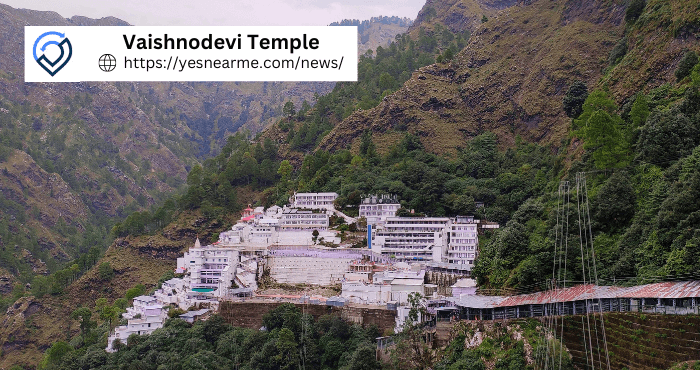
History Of Vaishnodevi Temple :
Vaishnodevi Temple, thus at a height of 1,584.96 m (5,200 ft), is 12 km from Karta on Trikuta hill. It is about 61 km from Jammu city.A geological study of the Holy Cave has indicated its age to be nearly a million years. There is also a mention of the Trikuta hill in Rigveda, the place where the temple is located. The Mahabharata, which gives the account of the Pandavas and the Kurukshetra War, thus does mention the worship of the goddess Vaishno Devi.Before the Kurukshetra War Arjuna is said to have worshipped Devi on the advice of Lord Krishna for blessings.
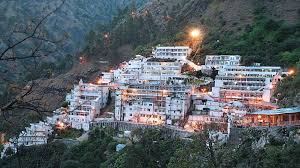
Vaishnodevi Temple
Pleased by his devotion, but Mother Goddess appeared in front of him in the form of Vaishno Devi.When the goddess appeared, Arjuna started praising her with a stotra, in which a Shloka goes by saying ‘ Jambookatak Chityaishu Nityam Sannihitalaye ’, which means ‘you who always dwell in the temple on the slope.The mountain in Jambhu’ — probably referring to the present day Jammu. Former Governor of Jammu and Kashmir Jagmohan says, “.Mata Vaishno Devi shrine is an ancient one whose antiquity is pre-Mahabharathan, Lord Krishna is believed to have advised Arjuna to go up in the hills of ‘Jambhu’ and seek the blessings of Vaishno Devi before taking up arms on the battlefield. ‘Jambhu’ is identified with present-day Jammu.Arjuna while worshipping Vaishno Devi, calls Her, the highest Yogin who is free from decrepitude and decay, who is the Mother of the Vedas and the Science of Vedanta and who is the giver of Victory and personification of victory itse
Vaishnodevi Temple is one of the most revered Hindu pilgrimage sites in India, dedicated to Goddess Vaishno Devi, an incarnation of Goddess Durga. Located in the Trikuta Hills of Jammu and Kashmir, the temple attracts millions of devotees every year who embark on a challenging yet spiritually rewarding journey to seek the blessings of the goddess.
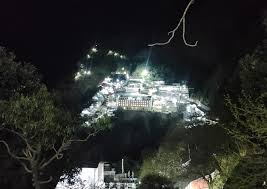
The Holy Cave and Darshan :
Vaishnodevi Temple is unique because it does not house a typical idol or statue of the goddess. Instead, the deity is worshipped in the form of three natural rock formations called “Pindis,” representing Goddess Maha Kali, Maha Lakshmi, and Maha Saraswati. These divine manifestations symbolize power, wealth, and wisdom, respectively.
Devotees enter the holy cave to seek the blessings of the goddess, and the experience is believed to bring spiritual peace and fulfillment. The temple remains open throughout the year, but peak pilgrimage seasons include Navratri and the summer months when thousands of devotees visit.
Religious and Cultural Importance :
Vaishnodevi Temple holds immense significance in Hindu culture. It is considered one of the 108 Shakti Peethas, where the divine energy of Goddess Shakti is believed to reside. The temple attracts people from all walks of life, emphasizing unity, faith, and devotion.
The government and shrine board manage the temple efficiently, ensuring the comfort and safety of devotees. Free meals (langar), accommodations, and medical aid are provided to facilitate a smooth pilgrimage experience.
Here are some visit places around the temple :
1. Bhawan (Main Shrine) :
The main Vaishnodevi Temple, also known as Bhawan, is the holiest spot where devotees seek the blessings of Goddess Vaishno Devi. Inside the temple, the goddess is worshipped in the form of three sacred rock formations called Pindis, representing Maha Kali, Maha Lakshmi, and Maha Saraswati.
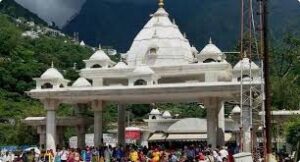
2. Banganga :
Located around 1 km from Katra, Banganga is the first major stop for pilgrims. According to legend, Goddess Vaishno Devi created this river by shooting an arrow into the ground to provide water for her devotee, Langoor Vir. Many devotees take a dip in the holy river before starting their journey.

3. Charan Paduka :
About 2.5 km from Katra, Charan Paduka is a sacred site where the footprints of Goddess Vaishno Devi are believed to be imprinted on a rock. Pilgrims stop here to pay their respects before continuing their trek.
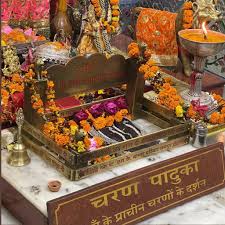
4. Ardhkuwari Cave :
Located 6 km from Katra, Ardhkuwari Cave is a significant point in the pilgrimage. It is believed that Goddess Vaishno Devi meditated here for nine months before heading to the Trikuta Hills. The cave is narrow, and devotees have to crawl through it, symbolizing a spiritual rebirth.
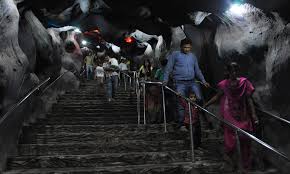
5. Himkoti :
A scenic point along the trekking route, Himkoti offers breathtaking views of the surrounding mountains. Though not a religious spot, it is a great place to rest and enjoy the natural beauty.
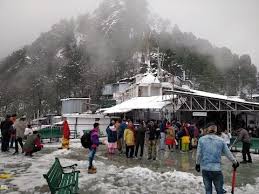
Conclusion :
Vaishnodevi Temple is not just a religious site; it is a symbol of unwavering faith and devotion. The pilgrimage, though physically demanding, is spiritually enriching, leaving devotees with a sense of fulfillment and divine connection. Whether one visits for religious purposes or to experience the serene beauty of the Himalayas, Vaishnodevi Temple continues to be a beacon of hope, faith, and devotion for millions.
